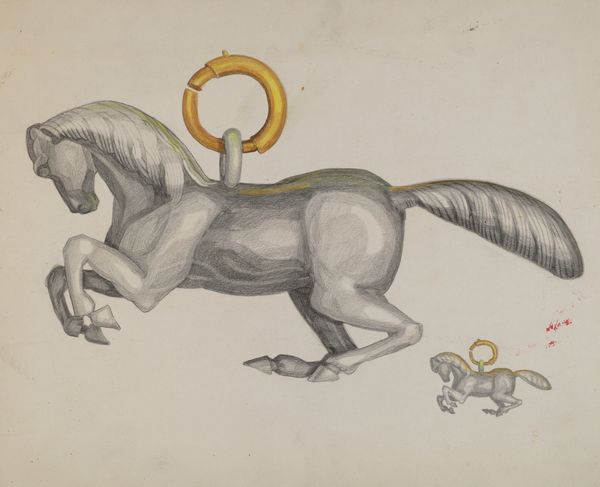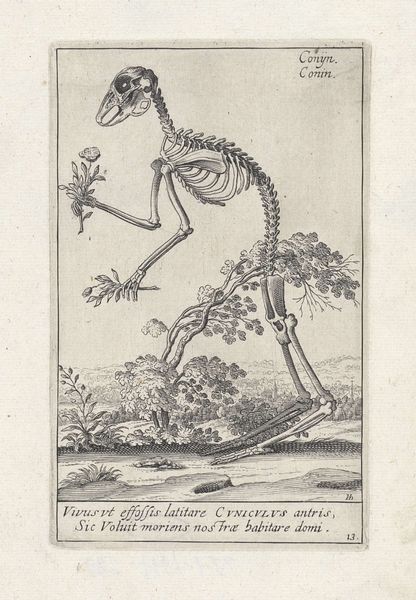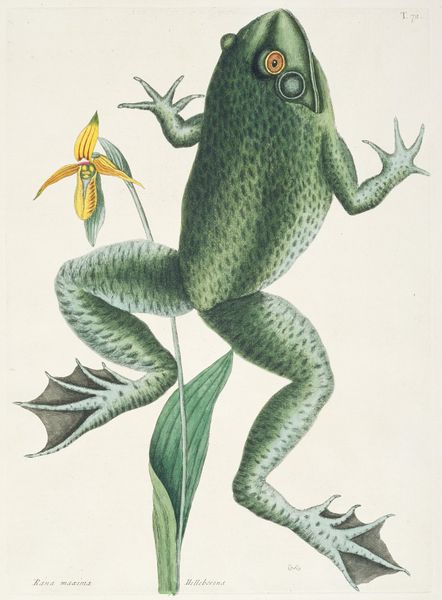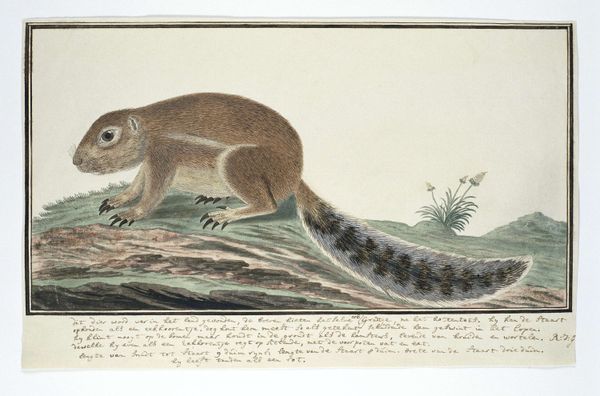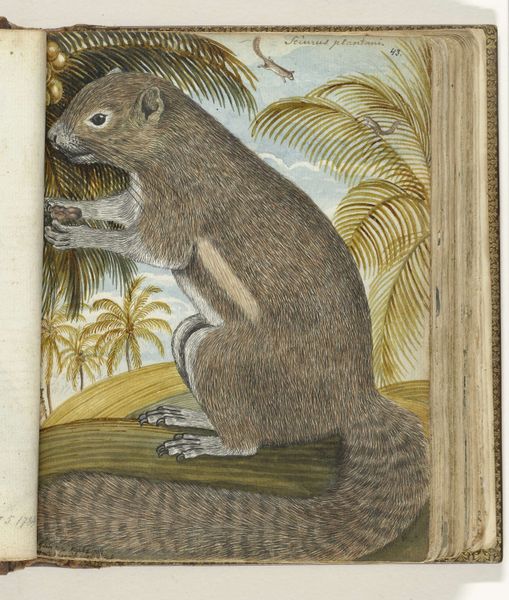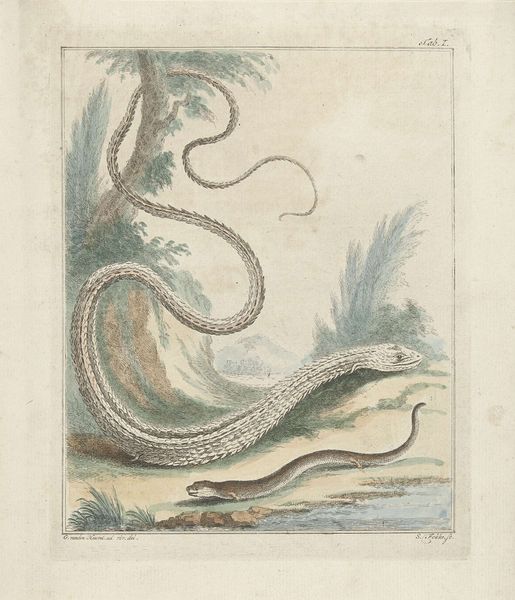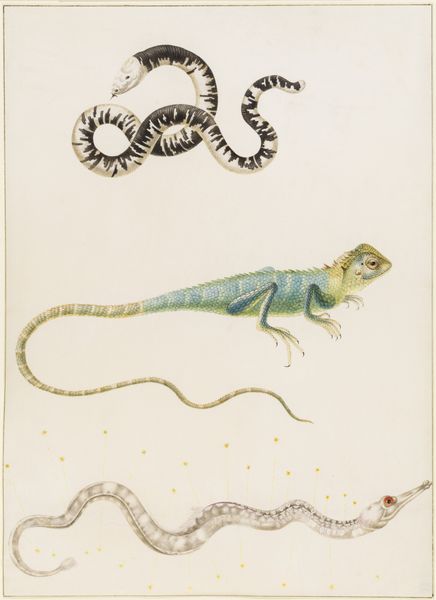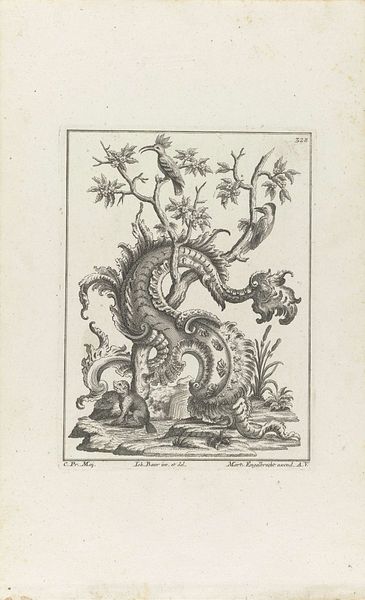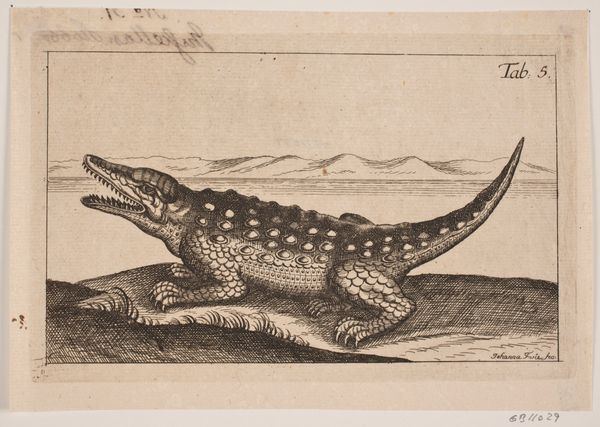
coloured-pencil, print, watercolor
#
coloured-pencil
# print
#
caricature
#
watercolor
#
coloured pencil
#
watercolour illustration
#
genre-painting
#
naturalism
Dimensions: plate: 23.5 x 18.7 cm (9 1/4 x 7 3/8 in.) sheet: 29.3 x 22.6 cm (11 9/16 x 8 7/8 in.)
Copyright: National Gallery of Art: CC0 1.0
Editor: This is "Pygmy Anteater" by George Edwards, created around 1755. It's a watercolor and colored pencil print, and honestly, it has such a peculiar charm! The anteater's almost human-like expression is quite striking. What stands out to you most when you look at this work? Curator: What jumps out is its context: 18th-century natural history illustration was deeply entwined with colonial exploration and scientific ambition. Think about the role this image plays. It's not just depicting an animal; it's presenting information, framing the 'exotic' for a European audience. Who was this 'Pygmy Anteater' for, and what assumptions did the artist and his viewers hold? Editor: So, it’s less about pure representation and more about how Edwards *chose* to represent it? I mean, look at those almost comical claws! Curator: Exactly! Consider Edwards' intended audience and the scientific institutions of the time. Was this image meant to educate, to entertain, or perhaps both? What does the meticulous detail—versus, say, some of the oddly cartoonish features—tell us about the priorities of natural history at the time? How did it feed into a larger understanding—or misunderstanding—of the natural world and the places from which it came? Editor: It’s almost like the image itself is a form of claiming or categorizing the animal. Do you think the print medium itself reinforces that? Curator: Absolutely. Print culture made this image, and the information it conveyed, widely accessible. It’s crucial to understand how this accessibility impacted how the animal—and, by extension, its native environment—was perceived and valued in the context of burgeoning colonialism. Editor: Wow, I hadn't considered the socio-political implications of a seemingly straightforward animal portrait. Curator: It's a potent reminder that even seemingly objective depictions are always shaped by the socio-cultural lens of their time. And, thinking critically about that lens can drastically change how we see these historical works.
Comments
No comments
Be the first to comment and join the conversation on the ultimate creative platform.
